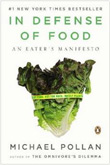Charitable Donations: Top Ten Canadian Tax Tips
March, 2024 (Updated) - David McConkey
Think more about giving more to charity. It can be a great way to support the wider community and feel good yourself. Income tax credits are an extra bonus. Here are top ten Canadian tax tips:
1. Credit, Not a Deduction
Contributions can be made to many worthwhile causes and non-profit
organizations, but only donations to registered charities qualify
for an income tax credit. Although they are often called “tax
deductible,” they qualify for a non-refundable tax credit, not a
deduction. For more information, check the Canada Revenue Agency
(CRA) Donations
and Gifts, which is Line 34900 of the General Income Tax and
Benefit Guide.
In general, you can get a credit for all donations to registered
charities, up to 75% of your net income. In the year of death (and
going back one year), the limit is 100% of net income.
Payments for raffles, dinners, and other events are not usually
eligible for an income tax receipt. In the case of a payment for a
dinner or similar event, only the amount over and above the cost of
the dinner itself qualifies for the receipt. Participants at such
events should get a receipt for this amount.
Donations are calculated on Schedule
9, and then on Schedule 1 (Federal Tax) and Form 428
(Provincial Tax).
For more general information, see Giving to charity. And here is a list of topics for charitable donors from A to Z.
2. Keep Receipts
The receipt should have the charity’s name and registration number,
date, serial number, amount donated, donor’s name, and be signed on
behalf of the organization.
The receipts also should have the website address of the Canada
Revenue Agency canada.ca/charities-giving. Anyone can look up
information on this website about charities in general, or any
specific registered charity.
If electronically (or even if paper) filing your income tax return,
you do not need to include your receipts. Save
your receipts for five years in case CRA asks for them later.
3. The $200 Rule
To encourage donations, the federal and provincial governments provide a two-tiered credit system. Add up all your donations. The amount up to $200 qualifies for a tax credit at the lowest tax rate. The amount over $200 qualifies for a credit at the highest tax rate.
When the federal and provincial programs are combined, taxpayers reduce their taxes by about 25% of the total donated up to $200. (The exact amount varies by province.)
For the amount over $200, the saving is about 45%, which again, varies by province.
Note that starting in 2016, the highest federal tax rate was increased to 33% for any income over $200,000 ($216,511 in 2021). Donations will also qualify for that highest rate, but only for the amount of income that is over $216,511, and only for donations made in 2016 and after.
Because the credit is higher for the amount over $200, there is a benefit to combining spouses (Tip # 4), and to carrying forward (Tip # 5).
4. Combine Spouses
Donations made by one spouse / common-law partner can be claimed by
either one. To maximize the credit, all donations should be lumped
together. It doesn’t matter by which person, they can use the credit
as long as they pay taxes.
5. Carry Forward
Some or all of your donations may be carried forward for up to five
years. This should be done to take advantage of the higher credit
over $200. Also, donations made in years of low income or when other
credits are used (so no taxes would be paid anyway) should be
carried forward. Finally, any donations over the 75% net income
limit should be carried forward.
Many computer tax programs automatically suggest a carry forward
when no federal taxes are payable. Check if provincial taxes are
still payable; if so, consider overriding the program to include
donations to reduce provincial taxes also to zero.
6. Donations at Work
Remember to claim donations made through your workplace; these are
recorded in Box 46 of the T4 slip from your employer.
As well, include donations made through pension or other income (Box
46 of T4A slips). Donations may have been made at school and so
recorded on a T2202A slip (Tuition and Enrolment Certificate). And,
less commonly, through investment income on Box 48 of T3 slips, Box
103 of T5013 slips, and Box 13 of T5003 slips.
7. Donations of Stocks
New rules encourage the donation of publicly traded securities
(stocks, bonds, etc.) that have appreciated in value. There is now
no capital gains tax on such gifts. This could be quite a benefit,
as you get the tax credit on the higher amount, but do not have to
pay any tax on your gain. Check with your charity about how to make
such a gift. For more information, see the CRA's Gifts
and Income Tax, and Gifts
of Publicly Traded Shares and Stock Options, as well as Capital
Gains, and Capital Gains on Gifts of Certain Capital Property.
8. In-Kind Donations
A recent survey by Statistics Canada found that almost everyone
(94% of those aged 15 and older) makes financial or in-kind
charitable donations. In-kind donations are commonly items such as
clothing, toys, household goods, or food. Other examples include
valuable art or antiques.
CRA does allow a tax credit for gifts of property (but not for gifts
of services). In order to get a tax credit for in-kind donations,
you must have a receipt from the charity showing the “fair market
value" of the gift.
In general, don’t expect a receipt for donations of old clothes,
furniture, etc. You may be able to get a receipt for donating
more valuable items. For anything worth more than $1,000, CRA
usually expects an independent appraisal. For more information, see
the CRA's Gifts
and Income Tax,
and Gifts
of Shares, Stock Options, and Other Capital Property, as well
as Capital
Gains, and Capital Gains on Gifts of Certain Capital Property.
9. Avoid Scams
Some people donate to charities with the temptation of receiving
credit for more than they actually donated. Do not run the risk of
having all your donations disallowed. If it seems “too good to be
true,” it probably is. Avoid tax schemes. Give to give, not just for an
inflated tax break.
10. Special Situations
There are special rules for donations of cultural and ecological gifts, and for artists who donate from their inventories. If you have partnership income and receive a T5003, T5013, or T5013A slip, then see Charitable Donations and Gifts - T5013 - Schedule 2.
For these situations and for more information on the above tips,
see the CRA booklet Gifts
and Income Tax.
More Tips:
Plan Ahead Statistics Canada found that donors who plan ahead give more than others. Think about donating a set amount or percentage of your income, making regular monthly contributions, considering the concept of effective altruism, creating an endowment fund while you are still living, and adding bequests in your will (your estate will get the tax credit in the year of death).
Donate Online You can donate easily to any of thousands of charities through CanadaHelps.org, itself a registered charity. They issue you a receipt and forward your donation to the charity you specify, less a 3% transaction fee.
Political Contributions Keep
receipts from contributions made to political parties separately.
They qualify for a different income tax credit. Check out Political
Contributions: Top Ten Canadian Tax Tips.
See also:
Effective
Altruism Poised to Make Major Impact
Tax Time Offers Folks a Chance to Reflect
Political Contributions: Top Ten Canadian Tax Tips
Popular Right Now:
- 15 Tips for Healthy Eating
- Quality of Life, Well-Being Research Something We Can Feel Good About
- Diets Don't Work, So What Does?
- Political Contributions: Top Ten Canadian Tax Tips
- Nestle Fitness 14 Day Weight Loss Program; What is Wrong Here?
- Charitable Donations: Top Ten Canadian Tax Tips
Must Read Books:
The 4-Hour Workweek:
Escape 9-5, Live Anywhere, and Join the New Rich

What You Don't Know About Religion (But Should)

In Defense of Food:
An Eater's Manifesto

The Life-Changing Magic of Tidying Up:
The Japanese Art of Decluttering and Organizing

Don't
Even Think About It:
Why Our Brains are Wired to Ignore Climate Change

Like This? Share It!
Press Ctrl + D to Bookmark!
